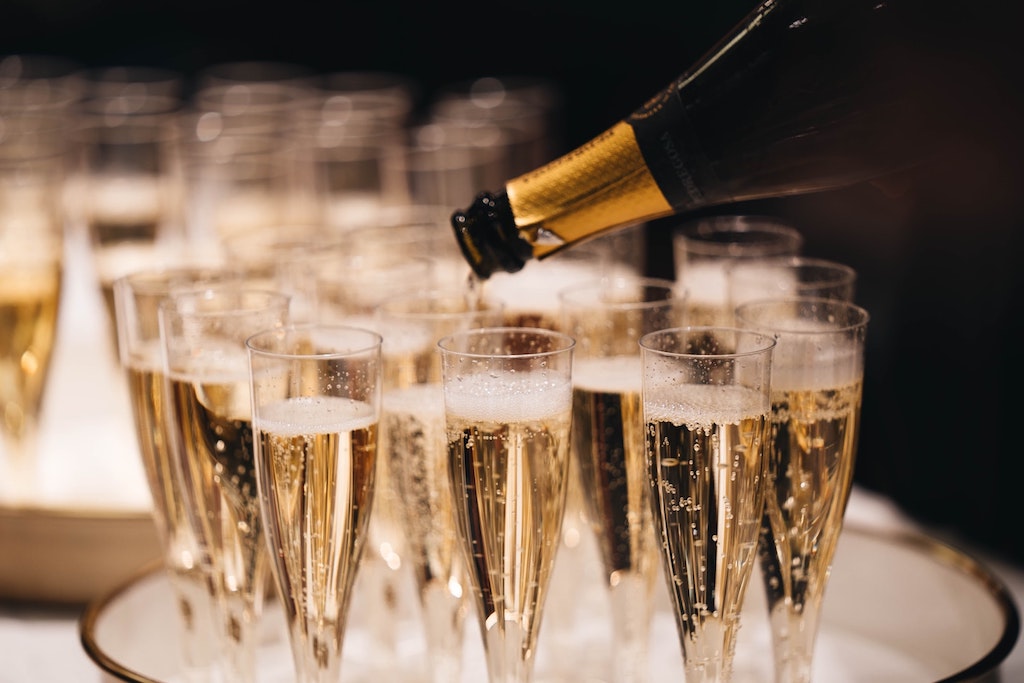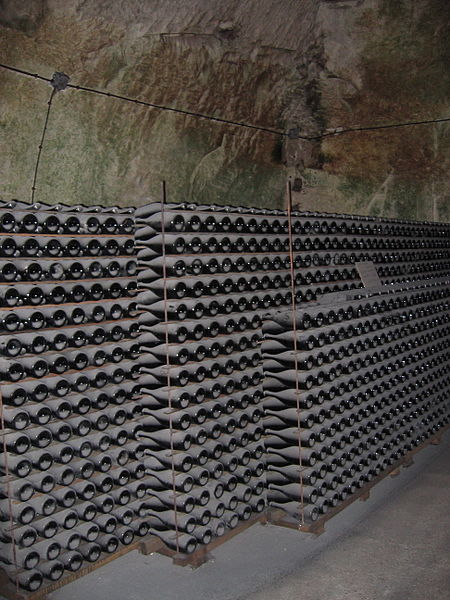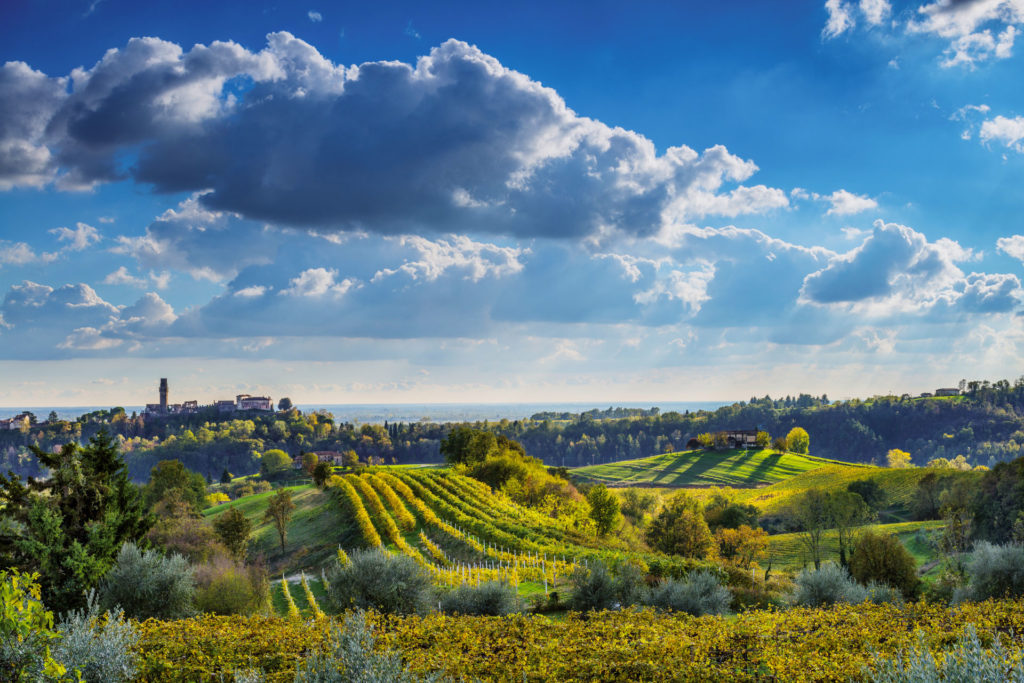
When were they born? Who made them famous? What are the differences that characterize them? A brief history of “bubbles“, the Italian Champagne, and how they are loved today by wine experts from all over the world.
The first Italian sparkling wine, named spumante and called “Italian champagne“, was born in 1865 as a result of the work of the Brothers Gancia and Lord Augusto di Vistarino who imported from Burgundy the rooted cuttings of Pinot Nero vine. This “Italian champagne”, better in quality and of fewer costs respect to the French one, was produced with Moscato vines and do not contained the syrups, usually added by the French producers at the end of wine processing.
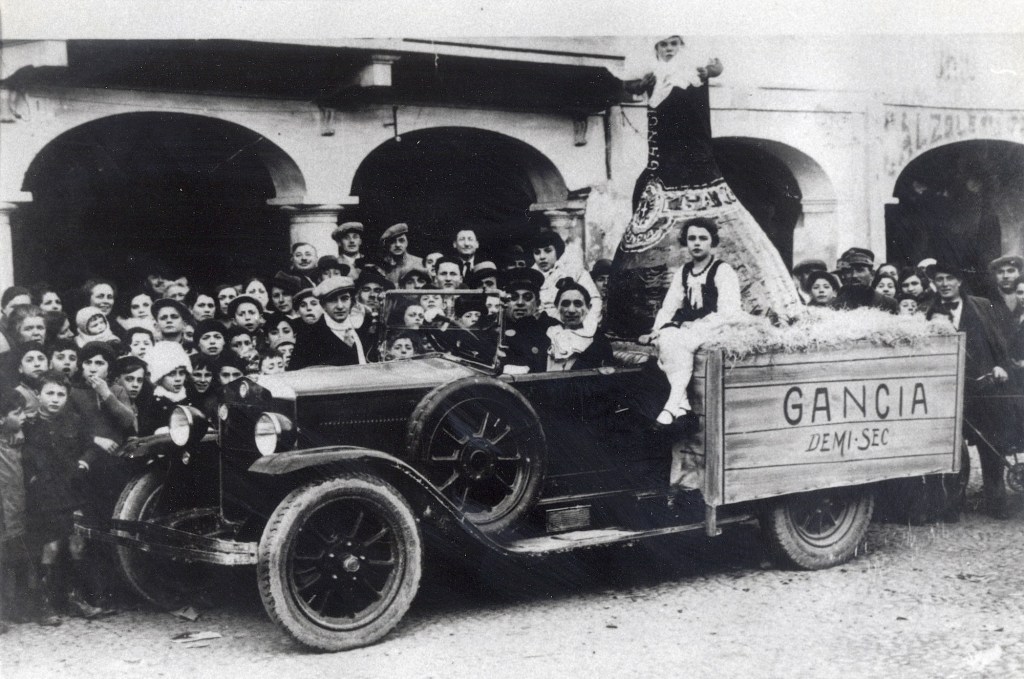
From the early years of the last century important Italian ?spumante? winery started their production. Giulio Ferrari of Trento (started its production in 1902 with the first 500 large bottles), Antinori, Cinzano, Contratto, Martini & Rossi, Santa Maria La Versa’s winery were some of the most famous.
Even a few decades ago, sparkling wine in the world was synonymous with Champagne, then, thanks to the good productions and promotional activity of Valdobbiadene winegrowers, Prosecco has won the forefront and the taste of international consumers. A few years ago our home production (and export) exceeded that of France.
Today Franciacorta, Prosecco Valdobbiadene and Trento Doc sparkling wines are among the best seller in the world. Thanks to this fame a new market has opened for many of our home wineries. Local vines (Durella, -a native of the Lessini Mountains-, Erbaluce, Ribolla Gialla, Müller Thurgau, Aglianico, Nerello Mascalese, Verdicchio dei Castelli di Jesi and many more) are now submitted to the sparkling process, mainly with the method of bottle fermentation, obtaining interesting and, in some cases, excellent results.
Did you know that behind a good sparkling wine there is a project that is born in the vineyard? The choice of grapes, the harvest period, the yeasts, the ageing duration. Will it be a sparkling wine to drink right away or will it last for years?
Some notions about the main methods
In natural sparkling wines, the carbon dioxide (CO2), that originates the “bubbles”, has formed by wine fermentation in bottles using two different methods.
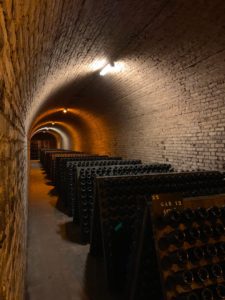
BOTTLE FERMENTATION OR CHAMPENOISE METHOD OR TRADITIONAL METHOD
For the production of sparkling wines with bottle fermentation method, neutral grapes are used (i.e. rosy grapes). ?Blanc de blanc? is the name for white wine obtained from white grapes while ?blanc de noir? is for white wine obtained from black grapes.
The most used vines are Chardonnay, Pinot Nero, Pinot Bianco, Pinot Meunier (only in Champagne region), Pinot Grigio and Riesling. Other vines that give excellent results are Verdicchio in the Marches region, Torbato in Sardinia and Inzolia in Sicily.
A high temperature range between day and night, good light exposure and well drained and calcareous soils are optimal conditions for obtaining grapes, with good acidity and excellent scents, suitable for sparkling process. The land of vocation to sparkling process is Oltrepò Pavese, along with Franciacorta, but also in the south, in the region of San Severo DOC (Apulia), sparkling wines are produced from Bombino Bianco native grapes. The particular latitude, coupled with the great contribution of the sun and the lack of rains during the year, allow Bombino Bianco of this area to express its best qualities precisely through the sparkling process.
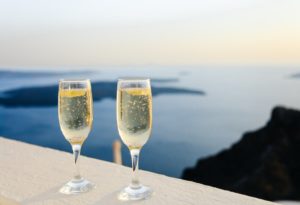
CHARMANT METHOD OR MARTINOTTI METHOD OR METHOD OF TANK FERMENTATION OR ITALIAN METHOD
Aromatic vines such as Moscato Bianco, Malvasia and Brachetto are mainly used in the Charmant method sparkling process. Also other vines, with smoother scents, such as Moscato Giallo, Glera (used for Prosecco), Aleatico Nero (semi-aromatic grapes) can be used.
However, the large majority of sparkling wines (both in Italy and in the world) are obtained using the Charmant method, using the most varied white and black grapes.
Which one to choose between Charmant or Champenoise method?
Well… it’s up to you. Cheers!
(Fabrizio e Roberto Matetich)
You can also read it on Italy4Golf
